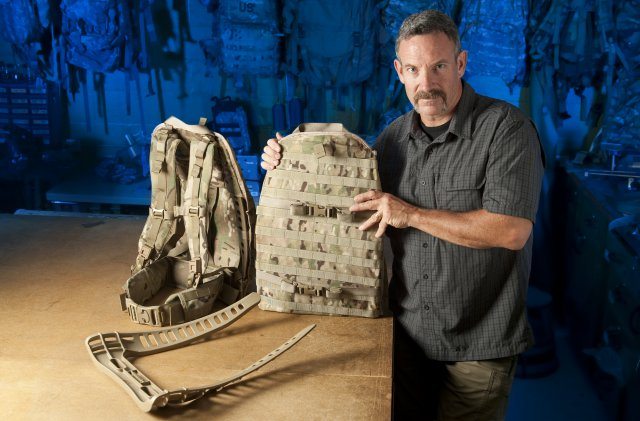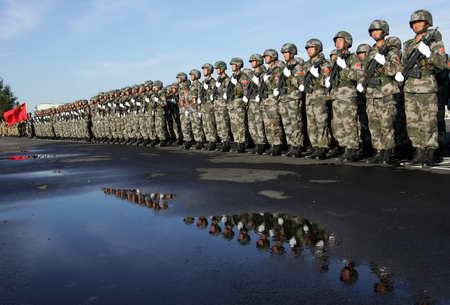Lightening Soldiers’ loads has always weighed heavily on Rich Landry’s mind.
While more and more equipment is being developed to assist them on the battlefield, Landry worries how Soldiers will carry it all over rugged terrain in places such as Afghanistan without incident or injury. As an individual equipment designer with the Load Carriage Prototype Lab, Product Manager Soldier Clothing and Individual Equipment, at Natick Soldier Systems Center, that’s his job.
Recently, Landry and colleague Murray Hamlet were tasked to come up with another solution for a load carriage problem. They took the frame and suspension from the Modular Lightweight Load-carrying Equipment, or MOLLE, Medium rucksack and affixed a panel that allows a Soldier to add a variety of equipment or modular packs to accommodate unwieldy ammunition, medical or electronic loads, depending on the situation.
“This is just a pack board, or a foundation for an entire range of tactical equipment beyond that of what we call the Soldier’s fighting load,” Landry said. “Anything that is MOLLE compatible, you’re going to have the ability to have a suspension system that’s designed to support upwards of 60 pounds that you can truly tailor specific to what your tactical mission is.”
The Modular Backpack Panel, or MBP, transforms the MOLLE Medium, intended to carry up to 60 pounds of essential gear for 72 hours, into an even more versatile system, Landry said.
“We’ve had calls from various organizations that carry all kinds of odd loads,” said Landry, adding that the rucksack sometimes was in the way. “Anybody who’s carrying large, crew-served weapons would find this application useful, the mortar guys, who are carrying a base plate, the tube, the various rounds, etcetera. They could utilize a modular setup to support those unusual loads.”
As Landry pointed out, the MOLLE’s frame, made of injection-molded plastic originally used in automobile bumper technology, has already proved itself over 15 years in the field.
“Car bumpers have to survive that huge range of temperatures, extremely hot and extremely cold,” said Landry, “and that made perfect sense to us.”
To that sturdy frame, Landry added the adaptable panel.
“It’s very basic load carriage capability,” Landry said. “They still need to carry their basic, critical individual equipment. So we will provide a set of larger pouches, which will attach to the panel but still allow the larger items to be carried.”
That includes water, which presented an early stumbling block for Landry, until he added a little something to the MBP.
“You’ve got a pocket inside here that’s designed specifically for the hydration system,” Landry said. “It’s got a little bit of extra room, so you can actually put some smaller items — cold-weather clothing, wet-weather gear, ration components, things like that, down inside here.”
Landry, a former 82nd Airborne Division pathfinder, can’t wait to get the MBP into the hands of light infantrymen.
“That is my customer,” Landry said. “It’s the guy that’s got to carry this on (his) back, and, obviously, light infantrymen are kind of the soul of that. That’s where we get our best information on things like that, because they’re out there carrying it. Let’s see where we can make it fit, and let’s see what improvements we need to make to it.”
Landry and Hamlet will use the feedback from the infantry and others to refine the prototype’s design.
“The great thing about this job is, every day is something different and you can always improve,” Landry said. “Everything can get better, and we can do that here.”











